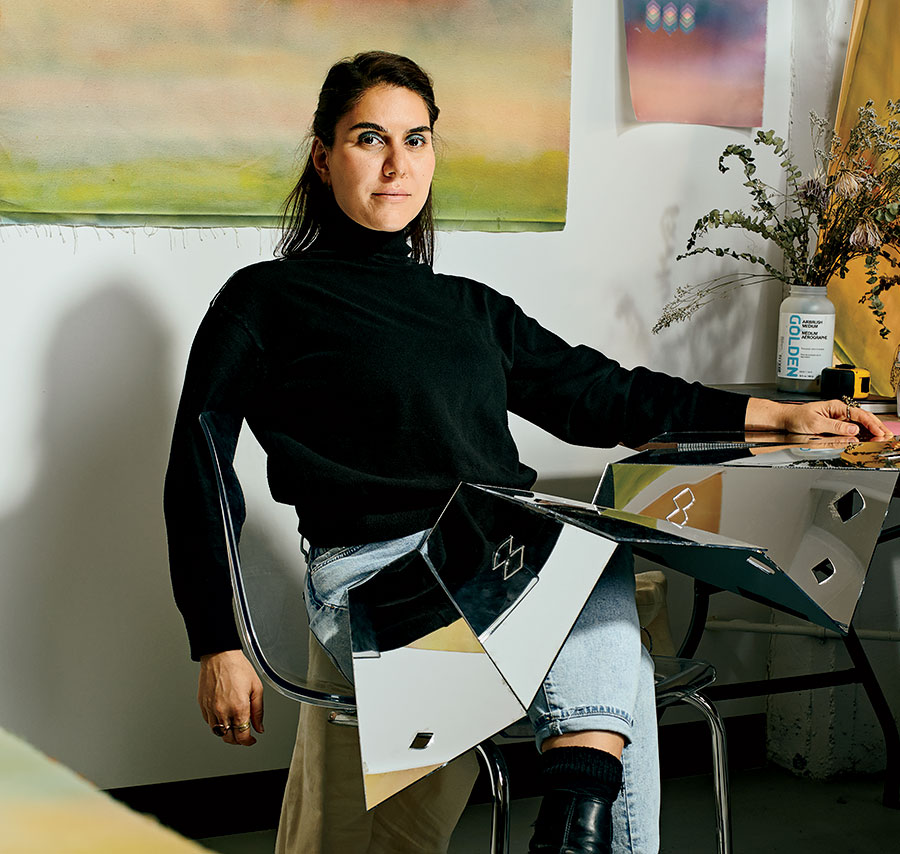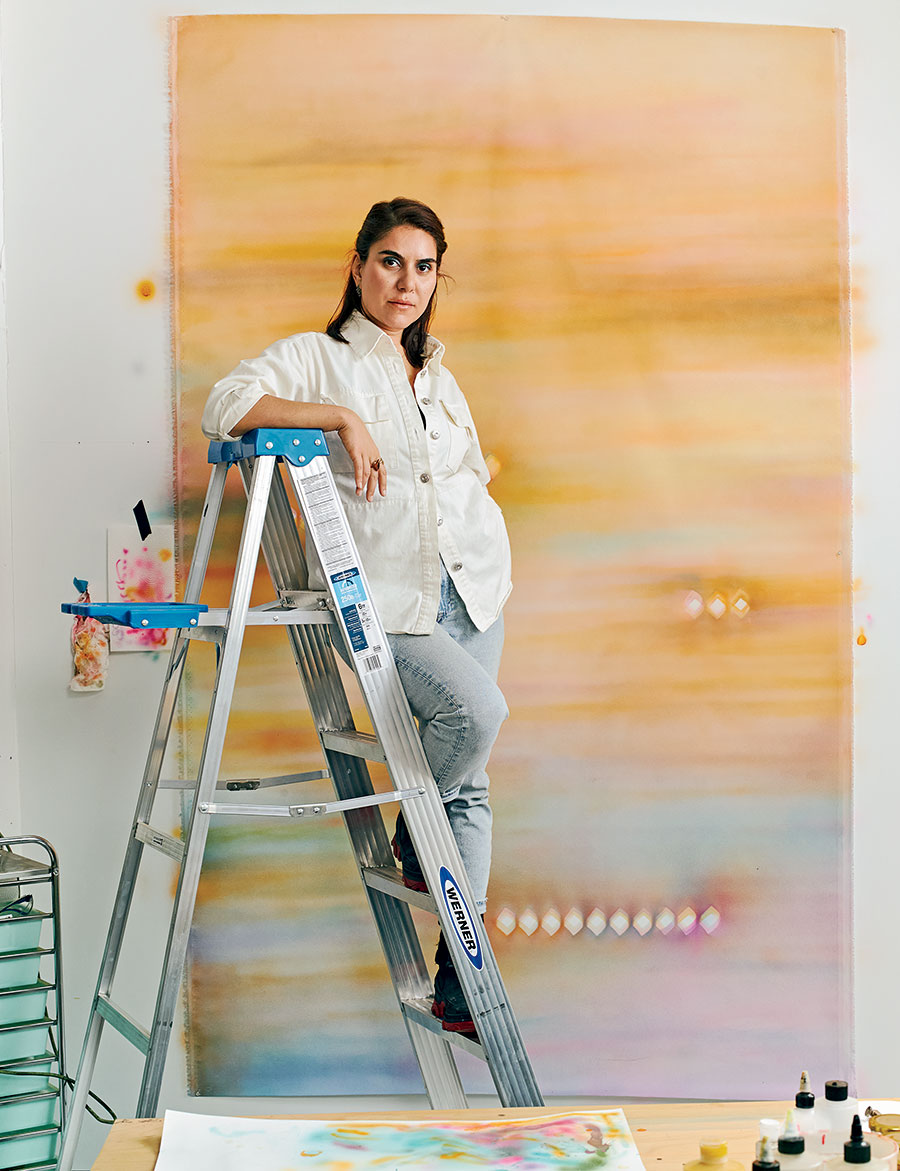Every morning, artist Maryam Taghavi wakes before dawn and walks from her home in Hyde Park to Promontory Point. When it’s warm enough, she swims, emerging in time to record the sun as it rises over the lake, using her phone to take a video of the brightening sky.
The colors of the sunrise over Lake Michigan, soft pinks and blues bleeding into each other, make up the palette of Nothing Is, Taghavi’s solo show at the Museum of Contemporary Art, on view December 20 to July 14. Part of Chicago Works, the museum’s series spotlighting local artists, the mixed media exhibition includes the Iranian-born Taghavi’s sunrise paintings, sculptures, and a poem in traditional Persian calligraphy.
Viewers will enter the show via a 12-sided architectural piece that evokes the hashti, an octagonal vestibule common in Persian houses. “It refers to that place of connecting, mediating the entrance to a home, to the interior space,” she says. “It’s a place of waiting and pause.” Taghavi’s modified hashti will feature cutouts — diamond-shaped noghtes, diacritics that clarify meaning in Persian and Arabic — allowing viewers to gaze into a mirrored prism whose many walls confuse the eye (optical ambiguity is an obsession of hers). These noghtes show up in her paintings as well, lighter spots on her colorful canvases. They stud the exhibition not just as punctuation but as horizon lines or stanzas, ambiguous symbols without a fixed meaning.
The obscurity of language has been a recurring theme in Taghavi’s work. After emigrating from Tehran to Vancouver at 16, she was surprised by the gulf between English and Iran’s official language, Farsi (also known as Persian). She wanted to get rid of her accent, to erase the distinction between her first and second languages. That never happened: “I still don’t think that I can go to certain places with English as I can with Persian because I grew up with it, learned to love with it,” she says. But the experience of existing in two languages seeded an interest in comprehension. “In my work, I have asked over the course of the years how language can be understood — or felt, rather — beyond its linguistic system. What happens if it’s not legible?”

Taghavi has spent the past decade in Chicago, where she moved to pursue an MFA. After initially enrolling in the School of the Art Institute of Chicago’s performance department, she quickly adopted other media. Since then, she’s inscribed the city with her linguistic art, often working with words or phrases in Persian. She created a flag emblazoned with a Persian phrase that translates to “Twenty-Four/Seven,” which hung in Rogers Park from late December 2019 until mid-March 2020, bookended by the Persian holidays Shab-e Yalda and Nowruz. For the new Terminal 5 at O’Hare International Airport, Taghavi created a golden sculpture in front of a mirror, a riff on an ancient talisman spelling out seven names believed to have protective qualities. Taghavi added “Zhina” to that list, evoking Mahsa “Zhina” Amini, the 22-year-old who died after being detained by Iran’s morality police for allegedly violating the country’s hijab laws, sparking nationwide protests.
Taghavi’s MCA show continues her engagement with language and its power. In addition to all the exhibition text being translated into Farsi (a first for the museum), the centerpiece is a variation on work by the Iranian artist Parviz Tanavoli, who for years has been sculpting the Farsi word “heech,” which means “nothingness.” Taghavi’s version is four feet long and made of Indiana limestone. Instead of spelling out “nothingness,” with all its connotations of mysticism and transcendence, her sculpture says “nothing,” for what she calls “a more vernacular” take.
Taghavi doesn’t worry about viewers who don’t read Farsi or understand the rich literary tradition she draws on. “What is really important for me in this show is this optical element that is not doing anything linguistic.”
The sunrise over Lake Michigan doesn’t need translating.



